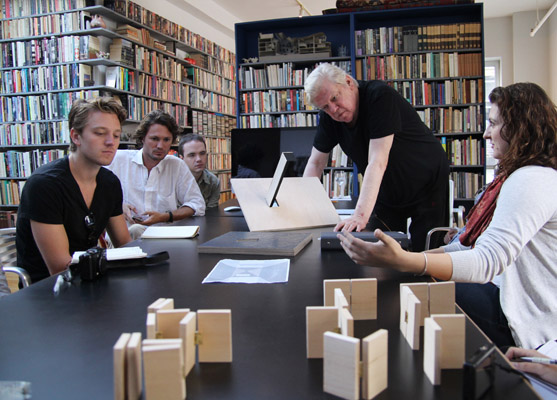
Lebbeus Woods’ apartment is a cabinet of curiosities. Strange chipboard shapes crouch on kitchen cabinets and book shelves; drawings by the front door show wild lines attacking cities. It is a mix of dystopian visions and domestic life, as well as enough books to fill a small library. The table in the center of all this is where several classmates and I have met for class the past two Fridays.
Our subject has been “the room.” More specifically, we have been sharing the results of our first assignment, to “visually represent the idea of a room.” Given the complexity of Lebbeus’ work, at first I found it surprising that his class would focus on such an abstract issue (the syllabus lists “the room,” “space,” “energy,” “time,” “emotion” and “architecture”). Of our eleven or so projects, some look more like a conventional box and some less so, but in conversation with Lebbeus we have discovered more subtle aspects in each student’s work. Ideas emerge about constrained movement, lines of perspective, discontinuity of space, the filtering of light and sound, architectural intent and so on. The leap from thinking about boxes to Lebbeus’ imaginary worlds no longer seems so large.
Towering above the room-sized skylight, the Beekman tower or “New York by Gehry” building reflects the afternoon sun down to our table. From this angle, it could almost be a conventional high-rise except for one give-away edge of rippling stainless steel. I don’t know how long Lebbeus has been in his current home, but there was clearly no architecture like this when he began his work. It’s as if one of his models escaped from the shelves and sprouted into a skyscraper. For an architecture student, the entire city is a cabinet of curiosities, though it’s hard to say if exploring its sights or sitting with its authors is more exciting. What makes me happiest to be here for a semester is that I don’t have to choose.
